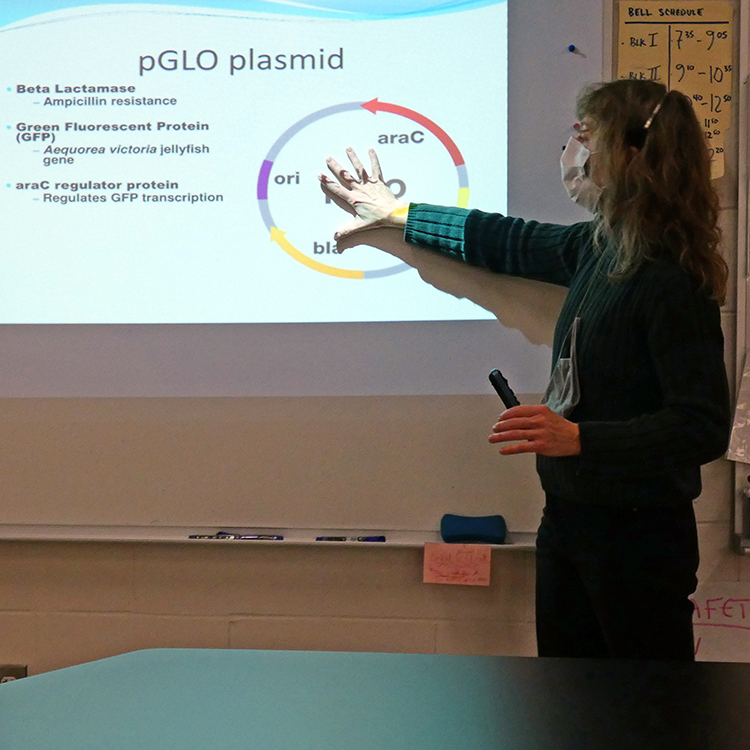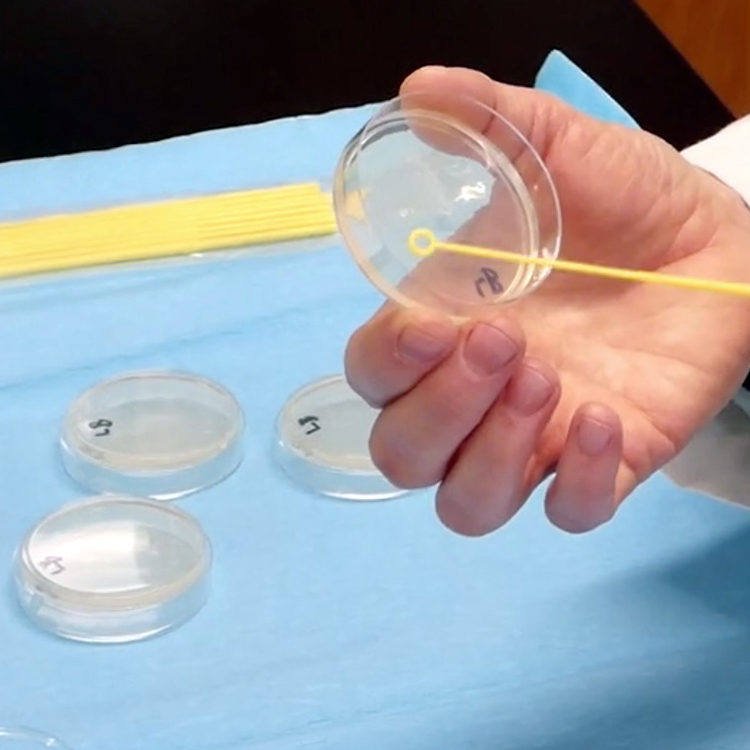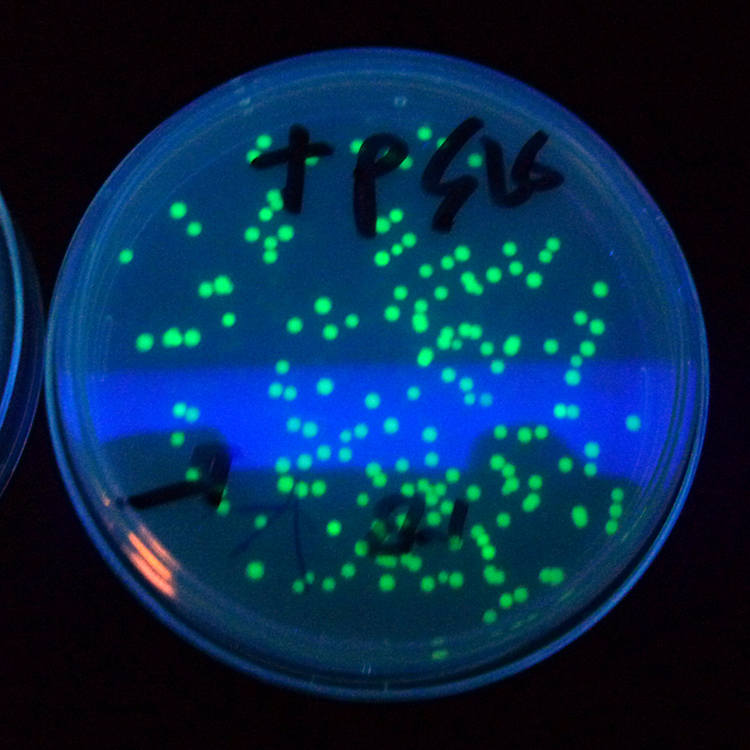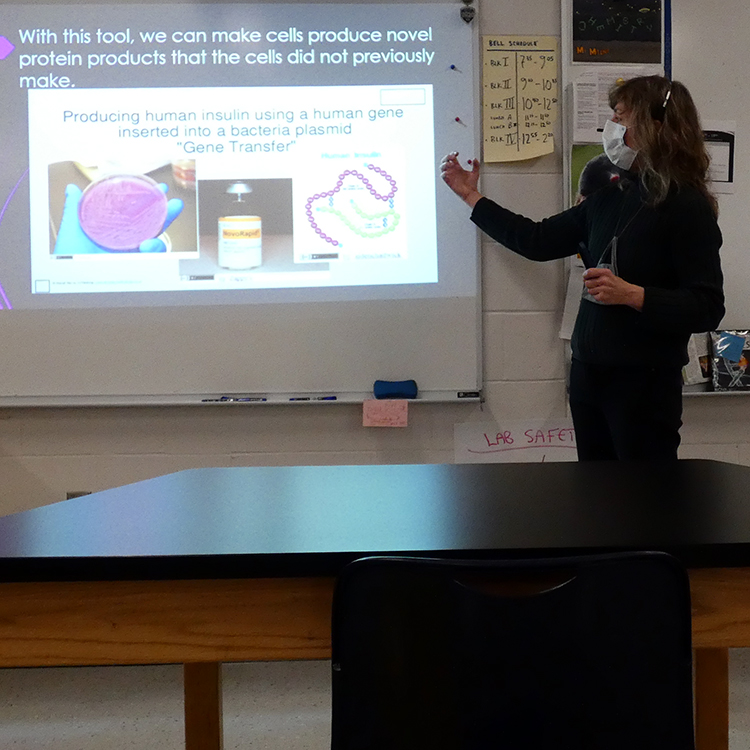Blue Cohort students in Dr. Moira Milne’s AP Biology class participated in a lab on bacterial transformation.
“The students will acquire the tools to transform E. coli bacteria to express new genetic information using a plasmid system,” Dr. Milne explained in her introductory lecture. “They will then apply mathematical routines to determine transformation efficiency.”
The lab used Escherichia coli bacteria HB101-K12, a non-pathogenic strain of E. coli that is commonly used in molecular biology labs. It is genetically modified to grow only in an enriched medium.
Another key component of the lab is pGlo plasmid. pGlo incorporates a special gene regulation system which can be used to control expression of the fluorescent protein in transformed cells. The gene can easily be switched on in transformed cells by adding the sugar arabinose to the nutrient medium which serves as the positive control of transcription.
Selection for cells that have been transformed with pGlo DNA is accomplishing by growth on selective media containing the antibiotic ampicillin.
Transformed cells will appear white on plates which do not contain arabinose and fluorescent green under UV light when arabinose is included in the nutrient agar.



